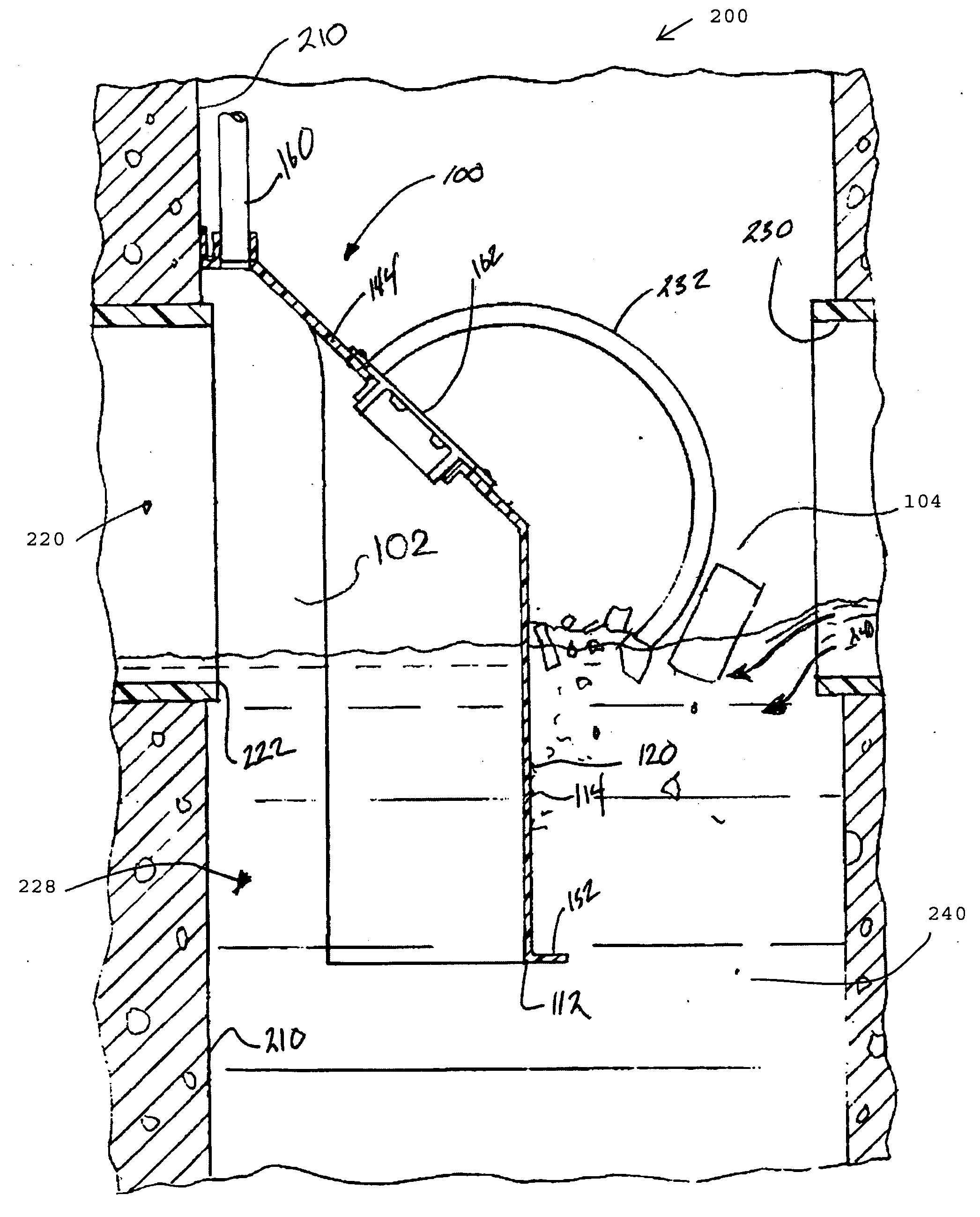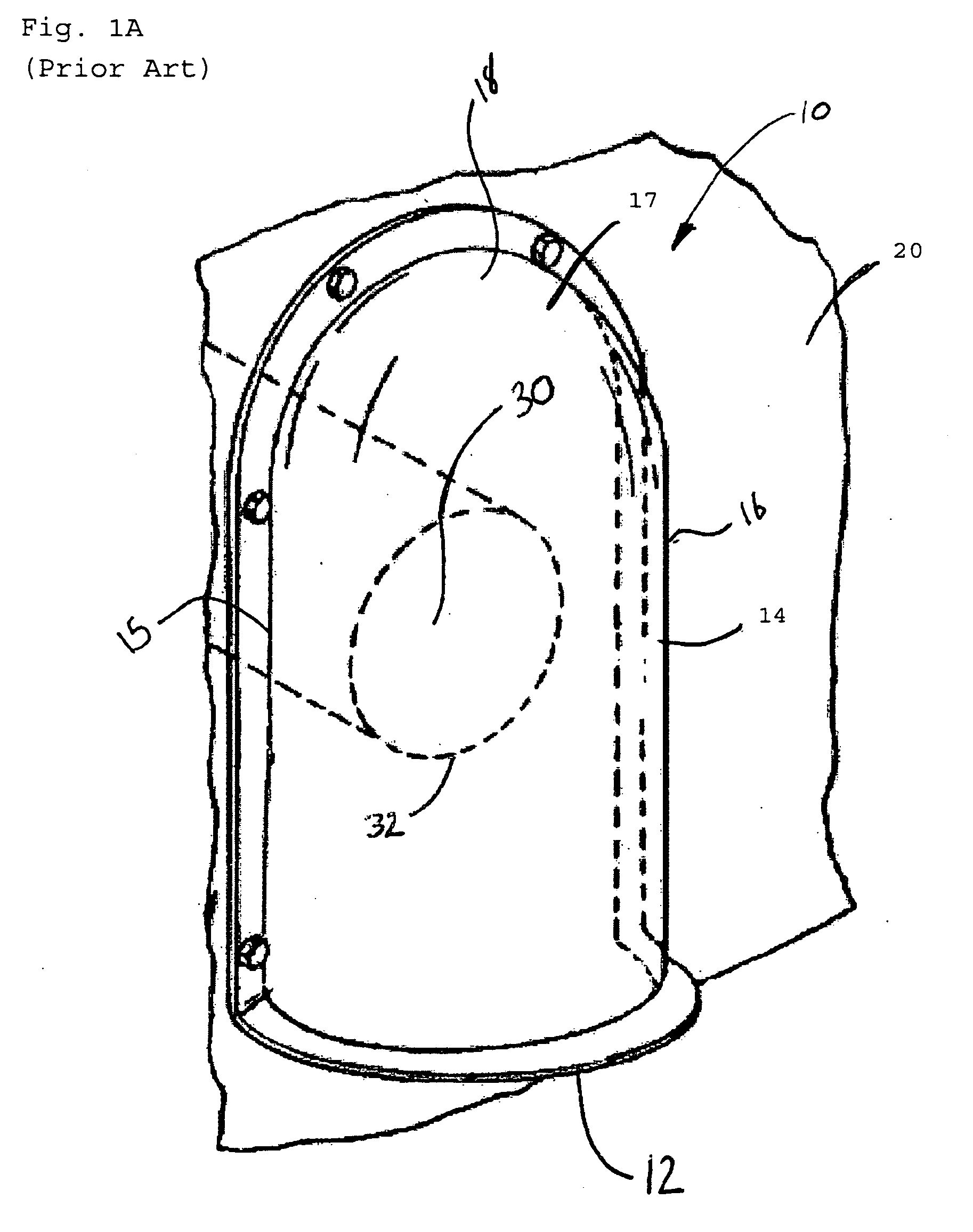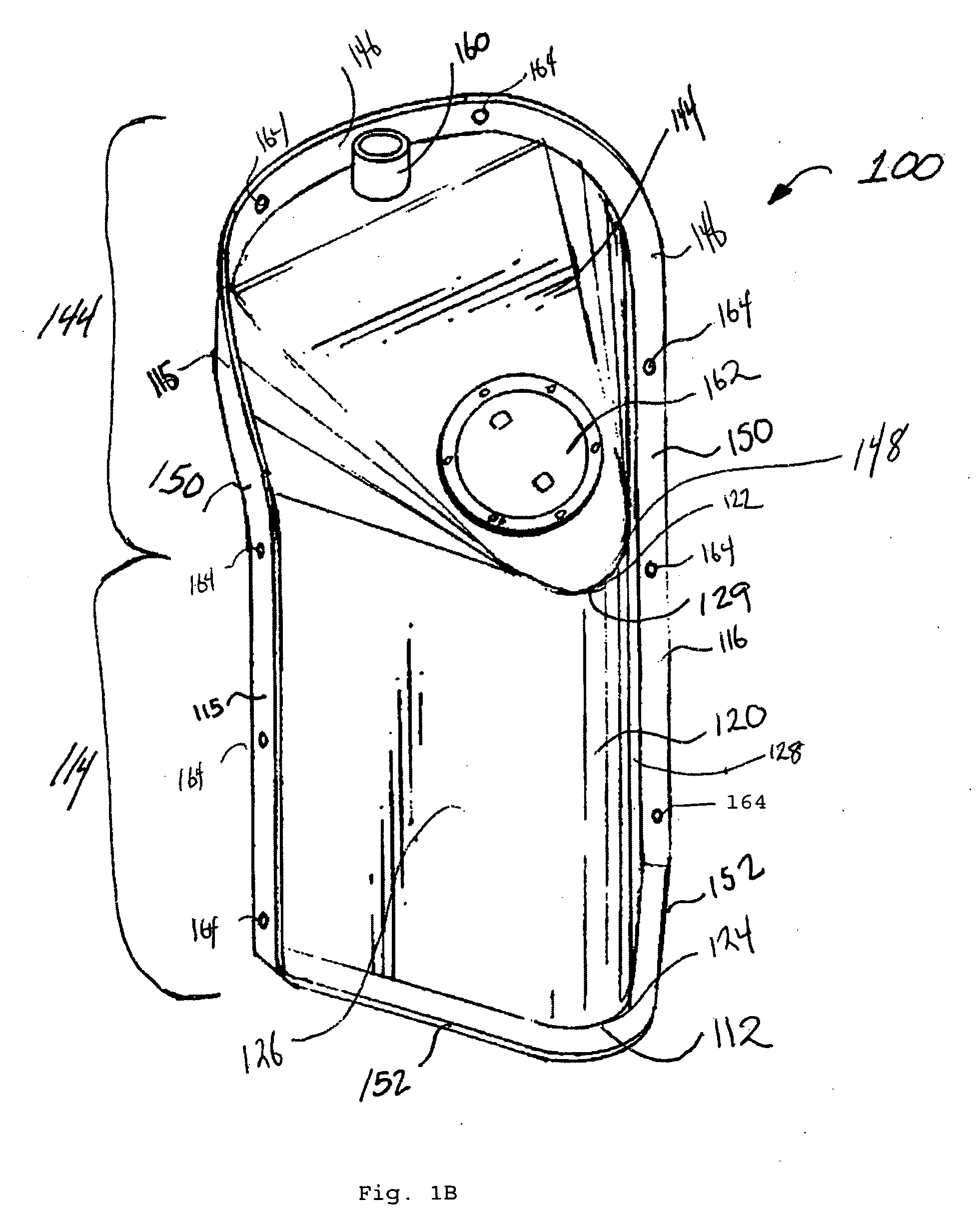Oil and Debris Separator
a technology of oil and debris separator and separator, which is applied in the direction of water cleaning, liquid displacement, separation process, etc., can solve the problems of reducing the efficiency of precipitation and affecting the quality of oil and other pollutants. , to achieve the effect of reducing production and shipping costs and reducing shipping and storage costs
- Summary
- Abstract
- Description
- Claims
- Application Information
AI Technical Summary
Benefits of technology
Problems solved by technology
Method used
Image
Examples
Embodiment Construction
[0064]Referring now to the drawings, wherein like reference numerals designate corresponding structure throughout the views.
[0065]FIGS. 1B, 2, 3, 4, and 5 illustrate a novel hood 100 wherein the hood wall 114 forms a prow 120 or a wedge 120 that extends along an axis. The hood in FIGS. 1B, 2, 3, 4, and 5100 comprises a hood wall 114, and hood top 144. The hood wall 114 and the hood top 144 come together to form a continuous hood 100. The perimeter of the hood 100 has a flange 150. The flange 150 provides a surface to sealably mount the hood 100 to the catch basin wall 210. The hood 100 includes a vent 160 to equalize air pressure in hood compartment 102 with the ambient air in the catch basin 200 outside the hood compartment 104. The hood top 144 further includes an access port 162 for accessing the hood compartment 102 after installation. It should be understood that some embodiments of the present invention do not include a vent or vent pipe 160, and in some embodiments the air in...
PUM
| Property | Measurement | Unit |
|---|---|---|
| angle | aaaaa | aaaaa |
| specific gravity | aaaaa | aaaaa |
| differential specific gravity | aaaaa | aaaaa |
Abstract
Description
Claims
Application Information
 Login to View More
Login to View More - R&D
- Intellectual Property
- Life Sciences
- Materials
- Tech Scout
- Unparalleled Data Quality
- Higher Quality Content
- 60% Fewer Hallucinations
Browse by: Latest US Patents, China's latest patents, Technical Efficacy Thesaurus, Application Domain, Technology Topic, Popular Technical Reports.
© 2025 PatSnap. All rights reserved.Legal|Privacy policy|Modern Slavery Act Transparency Statement|Sitemap|About US| Contact US: help@patsnap.com



